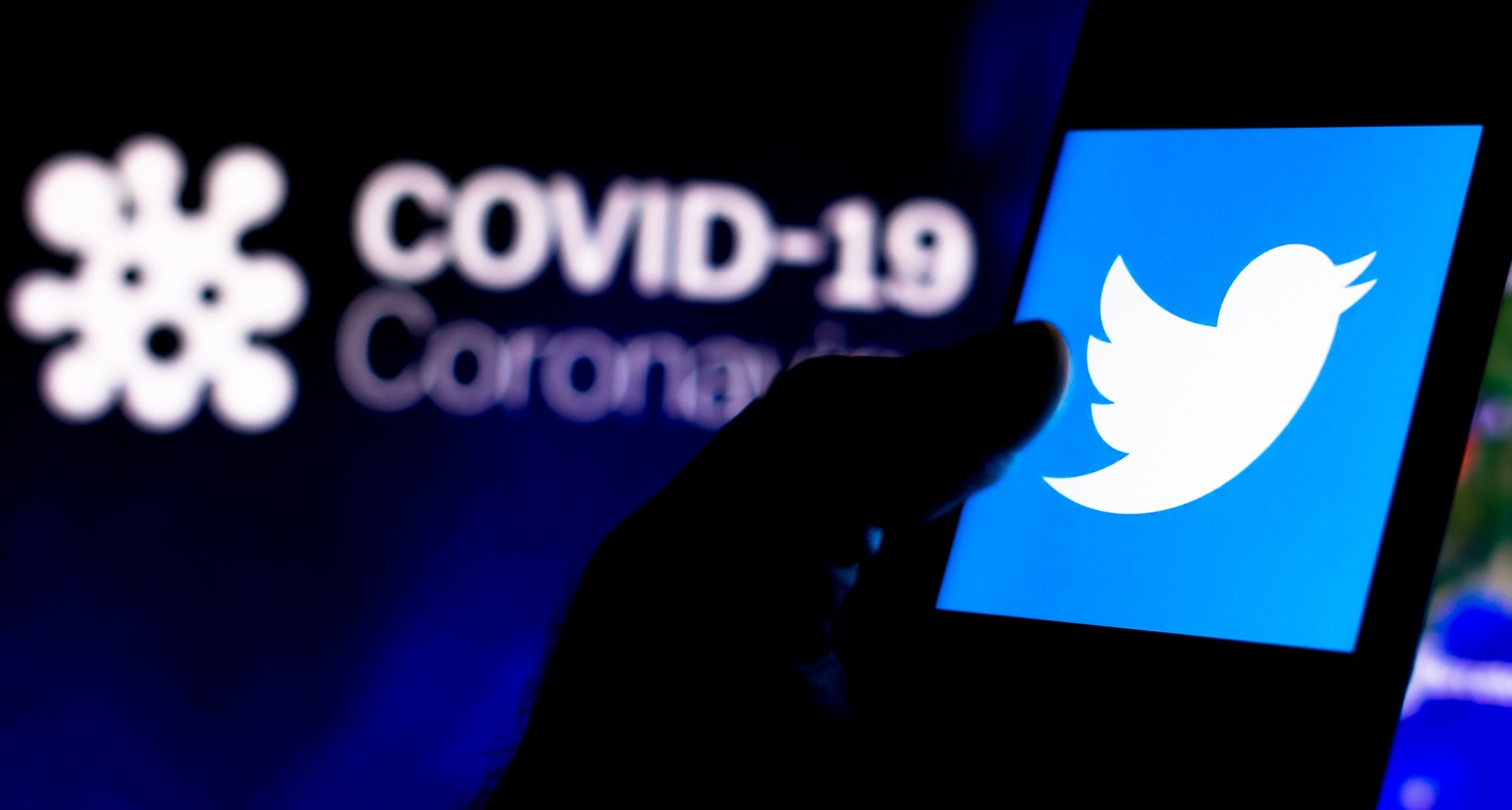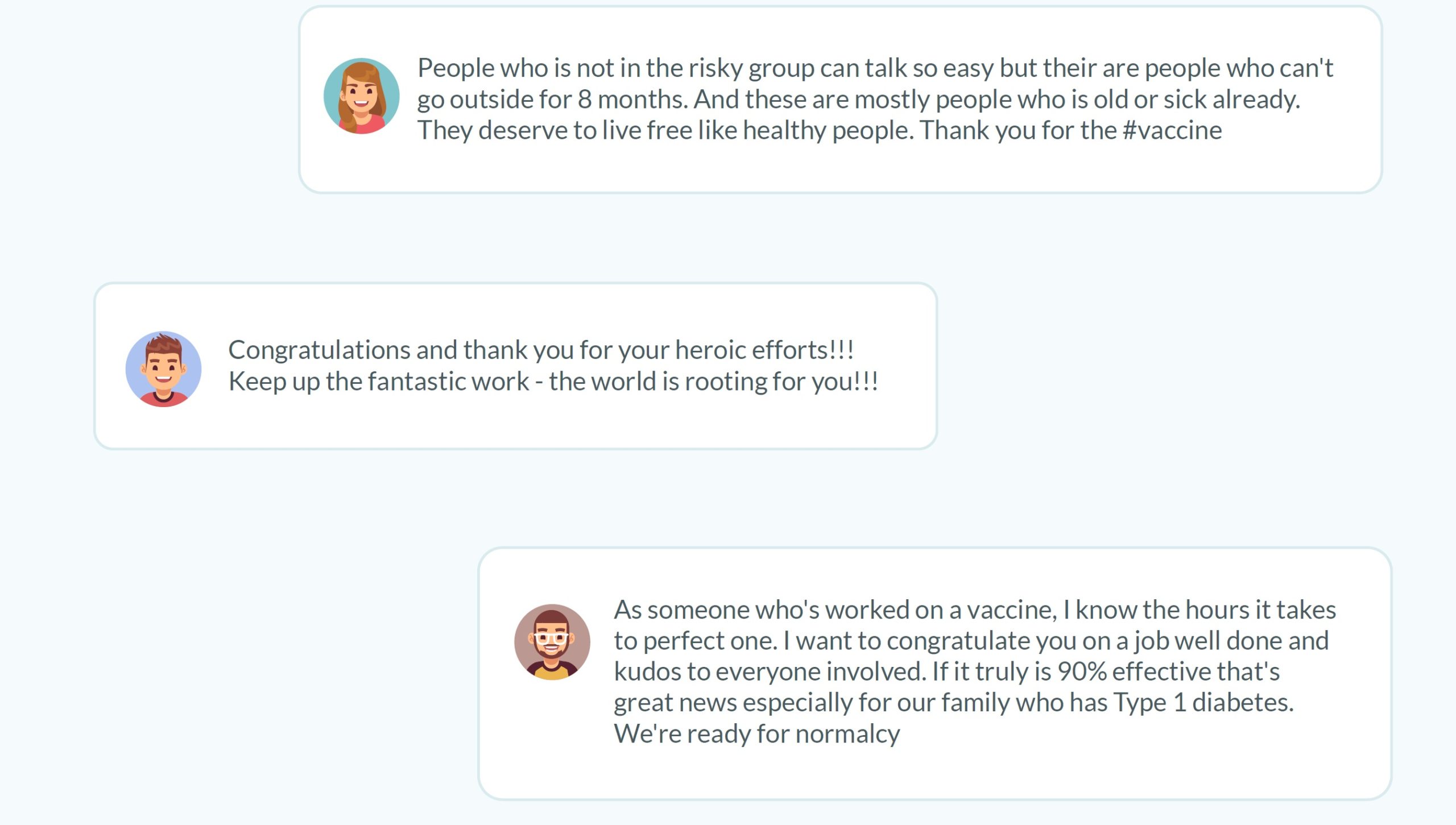The entire world has been focused on the COVID pandemic for over nine months. With the welcome news that multiple companies have and will release vaccines, the entire world’s attention has turned to the subject and the makers of them, and the complex and often confusing array of information surrounding them. Social media has exploded with an onslaught of user content on the subject across channels. Ensuring effective communications and accurate information on social media is critical, as it is now the largest medium in the world, the largest source for news and information, and where most people get and exchange information on all aspects of healthcare.
While some of this content is supportive and even praising of the pharma companies, much is not. People are already looking to social media to answer all their questions:
- What is the vaccine? Is it safe?
- Who is the vaccine for?
- Who gets the vaccine first? How? Where?
- Are there side effects?
- Should I take it?
- Should my parents or my children take it?
- What about other treatments?
- What does it cost and does insurance cover it?
- I heard there are two doses, but some people only need one; what about me?
- What about other treatments?
Questions on What, Where, When
Crafting answers to these questions is more than a one-time effort, as the answers (and how to best articulate them) are likely to change over time. For example, here are actual tweets (with the person’s handle removed) that we found on the subject:
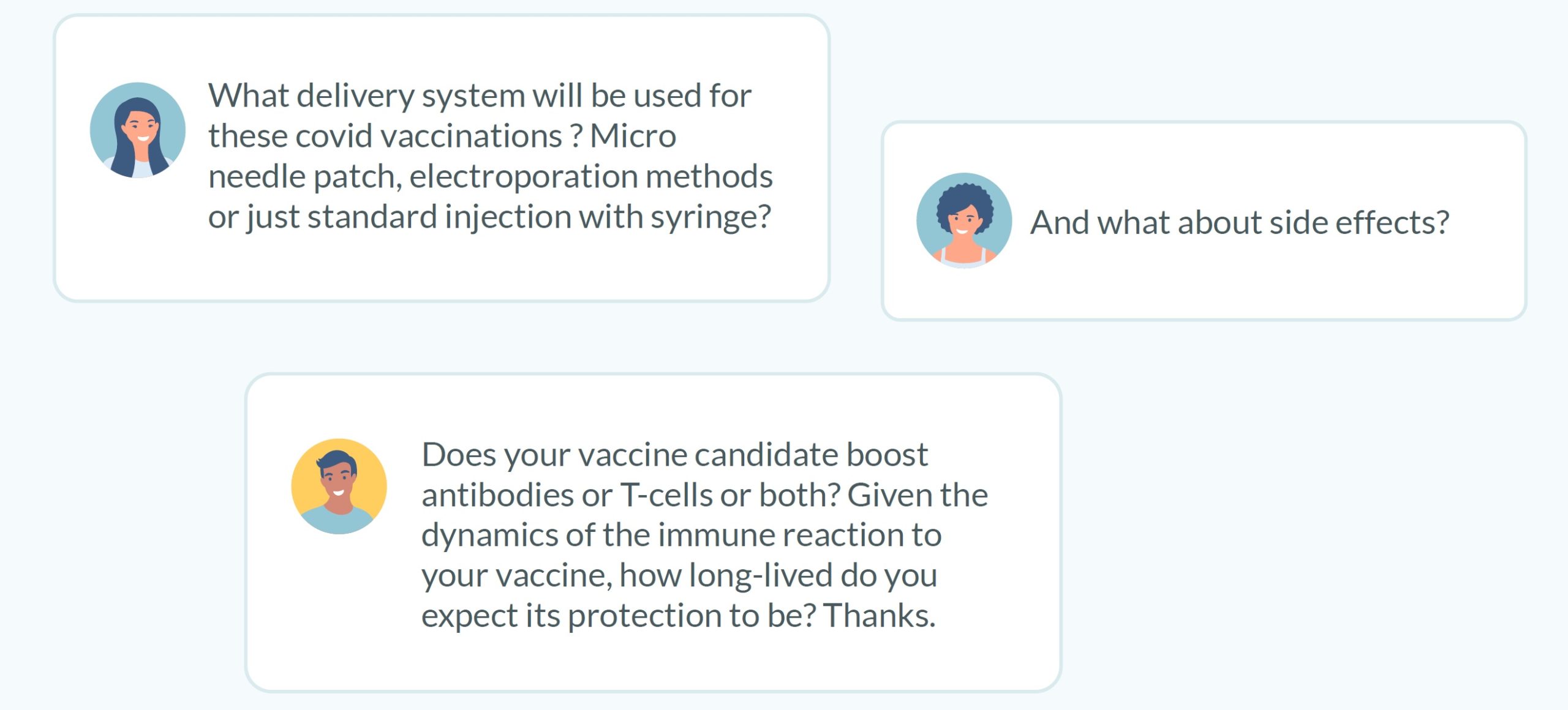 Praise
Praise
In addition to the complexity of the subject itself, such topics with mass population focus and high intensity emotions are very difficult to communicate. As we saw during the 2020 spring and summer peaks of the COVID crisis, people simply can’t absorb and understand the information easily, even when it is put in front of them repeatedly.
Misinformation
In this environment, vaccine and treatment producers are challenged to overcome the natural confusion, and then to guide, educate, and reassure consumers. Additional challenges include educating and reassuring some minority communities, many of whom are wary of vaccines due to a history of real or perceived exploitation on the subject. This reluctance is particularly troubling given that these same communities are among those most disproportionally affected by COVID, and hence in the most need of the vaccine treatment.
Adding to the difficulty is the dynamic that where questions rise, so follows misinformation—intentional and otherwise. While social media is predominantly a positive force in the world, it is so big with billions of users and tens of billions of comments per month, that even a small percent of misinformation can be huge in absolute numbers. This dynamic is often made worse by bad actors deliberately spreading false and misleading information.
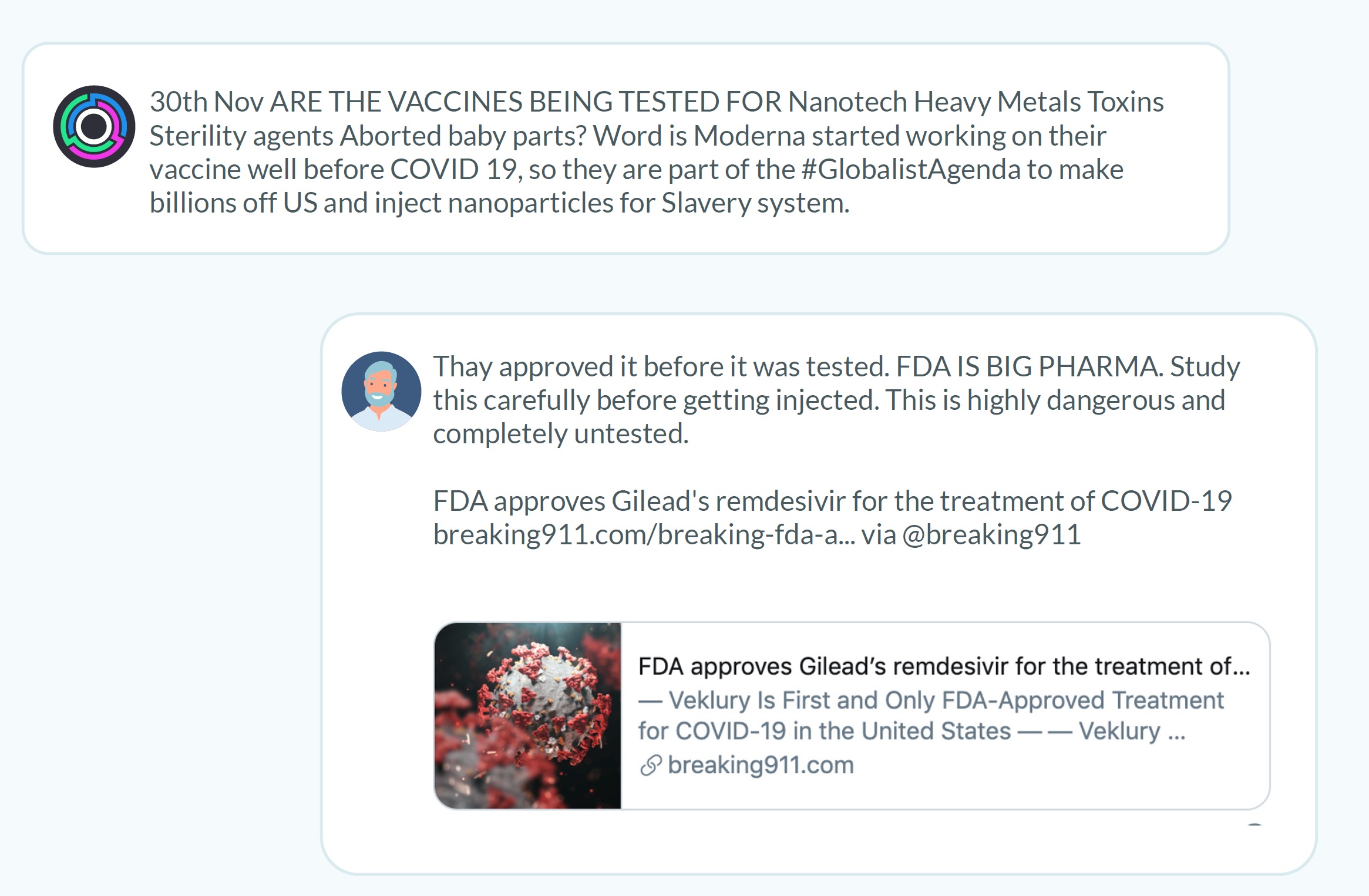 Anti-Vax and Anti-Pharma
Anti-Vax and Anti-Pharma
For the vaccine category, the problem is further aggravated by anti-vax and anti-pharma activists, who are using the COVID vaccine as an opportunity to push their agenda, attacking vaccines and treatments as well as the companies involved. Along the way, some of these activists spread false information and program content intended to disrupt the very awareness, education, and reassurance that consumers need. As if that weren’t enough, COVID, the vaccine, and other treatments have been sharply politicized, adding another layer of misinformation, confusion, and attacks.
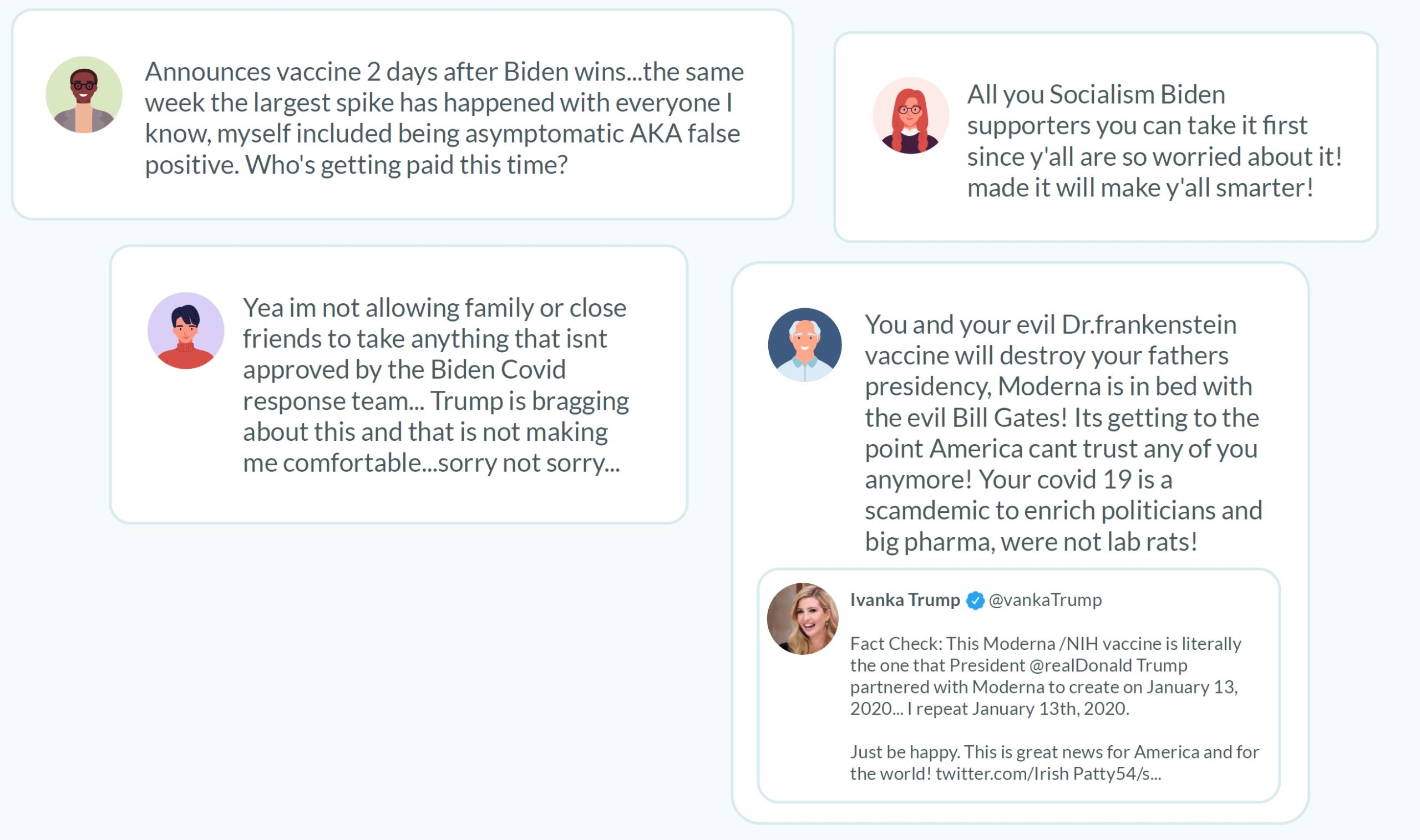 Compliance
Compliance
This is the social media reality in which vaccines and treatments must live. Vaccine and treatment makers must proactively optimize the positives, answer questions, address misinformation, and guide and reassure consumers. All this while managing and mitigating the negatives. Managing compliance is of the utmost importance. It’s a big task; but it can be done.
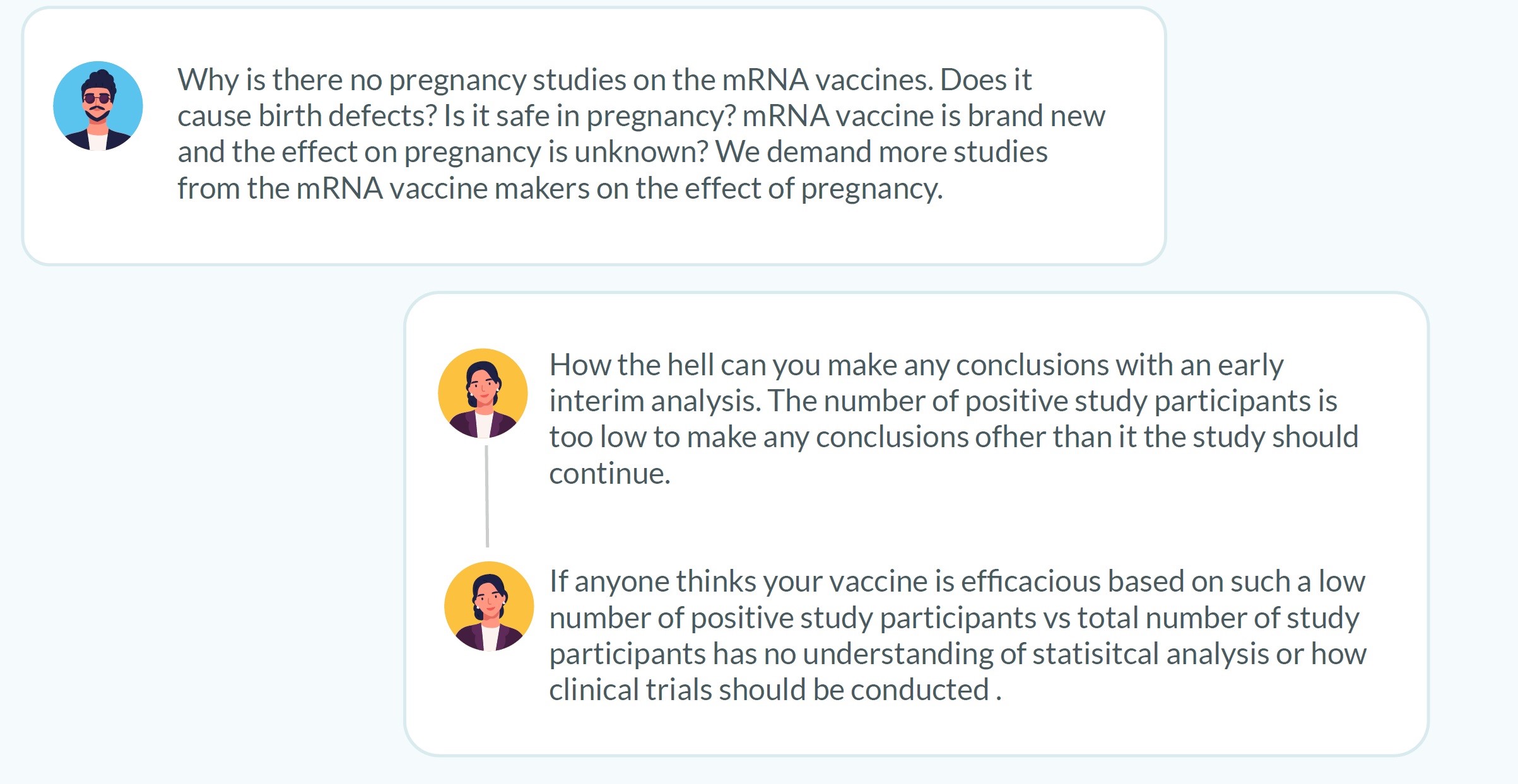 10 Best Practices for COVID Vaccine Moderation
10 Best Practices for COVID Vaccine Moderation
To help navigate or deal with some of the issues listed above, consider these 10 best practices for dealing with COVID vaccine information via social media:
1. C-Suite in the lead. Given the central importance of the vaccines to society and the company, the effective management of user content should be a C-Suite level commitment.
- Mandate to be proactive
- Funding the program for 2021 and 2022
- Ensuring cross-functional support
- Evolve the program and communications based on week-to-week insight and learnings
2. Experience counts. You must allocate dedicated resources to this as well as people experienced specifically in management and moderation of social media user content for pharma in its regulatory environment.
- Internal social media team
- Likely external specialist partners
- Operate cross-functionally with MLR, corporate communications, and customer support
3. Be prepared, in advance. A complete user content, moderation, engagement, escalation, and compliance plan should be defined and communicated across groups.
- Review, response, engagement, adverse events (AE) management
- Set escalation guidelines as well as escalation paths
- Best practice is to have social communities already in place with established culture and brand ambassadors/defenders. Most brands don’t have this already in place at the needed level, but it’s never too late to start.
4. Be where the content is, everywhere. Your users travel across social channels and so the program must be omni-channel. While some companies try to neatly divide reaching users via separate social media channels, the fact is that most people engage across multiple channels.
- Consumers are seeking a different experience in each different channel
- The moderation and management program must address all relevant channels with tailored guidelines, content, engagement, and compliance
- Content and responses should refer users between channels and to dedicated web pages
- Other media should direct people to specific digital and social content and engagement venues
5. Human moderation for quality and compliance. Human moderation is required to properly review user content and ensure compliance. We can’t “tech” our way out of this problem.
- The context, nuance, emotion, and volatile change dynamics of user comments around COVID and the vaccine are such that computer algorithms simply can’t be trusted to make the necessary judgements
- Software can efficiently triage, organize, and prioritize comments for human moderators to review
- Technology also serves to help human moderators to efficiently escalate, case manage, and engage
- Human moderation is available in multiple levels from the most basic content review to high-level engagement and customer and compliance support. For COVID vaccine subjects, the program should involve higher-level moderation
6. Flex the capacity muscles. User volume and mix, as well as content usage patterns, intensity, and flows, will change dynamically.
- Include early alert models and flexible capacity supported by budgets for more user content and moderation than expected
- Plan and budget for more than you think you will need
- When volume takes off on a weekend afternoon, a company must be able to scale moderation in real time. It simply cannot wait until Monday morning (or even that evening) for incremental budget approvals.
7. Structured compliance. To meet compliance needs, as well as to ensure a well-managed program and good customer experience, guidelines, responses, and escalation paths need pre-definition, with MLR approval.
- User content, whether good or bad, is dynamic and demands tailored management
- Robotic and redundant sounding responses will not manage well or provide a good user experience
- It’s best to prepare a large set of responses, with an agreed-upon level of agent personalization and customization
8. Engage. To guide and educate users, provide them assurance in an emotional context, and mitigate negative content, the company must conversationally engage in social media.
- Merely posting content and reviewing comments does not meet this necessary threshold
9. Embrace, mitigate, deflect, and flip. Unlike traditional PR models, which attempt to control the narrative, social media brands must embrace the user comments, including the negative content—even allowing the brand to be criticized on its own pages.
- It’s impossible to shut down or control negative content because it can easily move somewhere else on the Internet with a simple click
- If the brand appears to be censoring content, especially on highly visible or controversial topics, such efforts can backfire, galvanizing the critics and eroding brand credibility
- By embracing the content, providing context in which to amplify the positive while mitigating and redirecting the negative, a brand can emerge as the positive player representing the interests of its customers
- In some cases, it’s even possible to leverage negative content to bring more attention to the positive information and the brand’s message. We call that the flip.
10. Plan to learn. Listen to and gain insight from what your customers, supporters, and detractors are telling you.
- The social media conversation provides the best opportunity for pharma companies to learn in real time and adjust their efforts to educate consumers, influence other constituents, and tune marketing messages
- Can even gain feedback that might affect the vaccine’s distribution or even the vaccine itself
- The most effective programs design the content and moderation from the start to provide insights, with reporting that’s visible to and actionable by multiple levels and parts of the company

